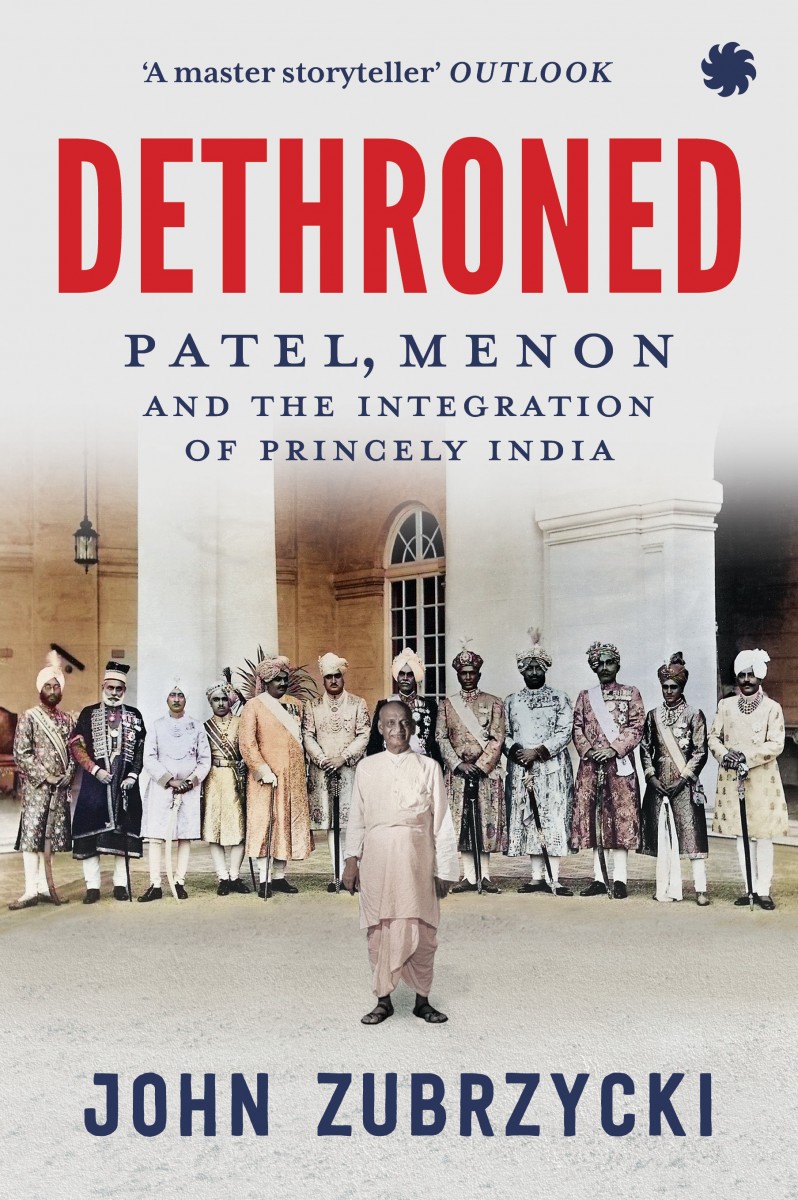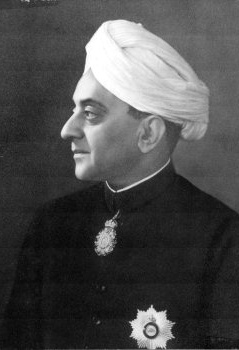Just Before Independence, Travancore Too Declared it Would Not Be a Part of India
Situated on India’s southwest coast, Travancore had access to the main trade routes crossing the Indian Ocean, putting it, as the India Office conceded, in a position ‘to assert effective independence'. Its population of 60 lakh in 1947 had a literacy rate of 47 per cent – three times higher than the rest of British India. It was also progressive. In 1936, it became the first state to open its temples to Untouchables, though the reasons for its doing so were largely pragmatic. Thousands of Untouchables were converting to Christianity and becoming politically active.

John Zubrzycki
Dethroned: Patel, Menon and the Integration of Princely India
Juggernaut, 2023
Travancore was verdant and resource rich, with forests of teak, ebony and sandalwood. It produced tea and spices, rubber, coconut and coir products, and also had mineral deposits, including graphite, mica and kaolin. Most importantly, Travancore had the second largest known deposits of monazite in the world. The strategic value of the rare earth had soared after the US dropped two atomic bombs on Hiroshima and Nagasaki in August 1945. A by-product of monazite was thorium, a crucial ingredient in the operation of nuclear reactors and in the manufacture of nuclear weapons. C.P. Ramaswami Aiyar’s 11 June declaration that his state would become independent once power was transferred had rattled Mountbatten, Nehru and the Congress leadership. In a press conference a few days later, the dewan cited the defeat of a Dutch naval fleet in 1741 as proof of Travancore’s former glory. As an independent nation, his state would be in ‘no worse position than Denmark, Switzerland and Siam’.
An additional reason to not accede was India’s decision to open diplomatic relations with the Soviet Union. This, in Aiyar’s view, would lead to the establishment of Russian embassies and consulates all over India, affording ‘immense facilities for infiltration of Communist propaganda, money and violent activities which have already been notorious in Cochin and British Malabar’.
He insisted his position was final and there could be no negotiations as the state was ruled ‘in the name and on behalf of the tutelary deity, Sri Padmanabha’. Born the son of a Brahmin lawyer in 1879, Aiyar followed the same path as his father, graduating with distinction from the Law School in Madras and joining the Madras High Court Bar in 1903. He went on to become the advocate general in Madras, law member of the viceroy’s Executive Council and a representative of the British India delegation at the first two Round Table Conferences in London. In 1931, he agreed to serve as legal and constitutional adviser to the Maharaja of Travancore and then as legal adviser to the maharaja’s mother, Sethu Parvathi, also known as Junior Maharani.
Despite persistent rumours that he was in a relationship with her, he was elevated to the post of dewan in 1937. According to Clarmont Skrine, who served as the resident in Travancore in 1938, ‘The most striking feature of the situation is the intense, almost hysterical, hatred shown by the educated and semi-educated classes for the Dewan. With a few exceptions, everyone in the State seems to long for his removal, and many yearn also for his ruin and disgrace.’ Though his aims were the peace and prosperity of Travancore, ‘his methods are Machiavellian; he rules by dividing, he bribes with office and other favours, he sets traps for his critics and plays on the weaknesses of his enemies. It is no wonder that the man in the street does not love him.’

C.P. Ramaswami Aiyar. Photo: Public domain, from The Hindu's archives
Skrine’s successor as resident, H.J. Todd dismissed Aiyar as a vain man, ‘very susceptible to flattery . . . Likes to be treated as a cosmopolitan, man of the world rather than as an Indian; and although he pays lip service to nationalism and his religion he voices, privately, much contempt for his politically minded compatriots and the superstitions of the ultra-devout.’
It was a view that Wavell concurred with, noting in his journal in 1946: ‘There is no doubt that Travancore is a one-man show, and the one man is Sir C.P. There is no doubt about his efficiency, his charm when he chooses to exert it, or his determination to get his own way.’
Support for Travancore came from an unexpected quarter. In June 1947, Vinayak Damodar Savarkar wrote to Aiyar backing the maharaja and his ‘courageous and far-sighted determination’ to seek independence. ‘The Nizam, Muslim Ruler of Hyderabad, has already proclaimed his independence and other Muslim states are likely to do so. Hindu states are bold enough to assert they have the same rights.’
Savarkar’s views were not shared among the nationalist leaders. Gandhi blasted Travancore’s bid as ‘tantamount to a declaration of war on free millions of India’.
Nehru warned that the state ‘would be starved out’ and that an economic blockade ‘would lead to the elimination of independence within three months’. Responding to what he called a ‘pistol at my head’, Aiyar raised the stakes by banning the Travancore state unit of the Congress party and starting negotiations for the purchase of rice from Sindh to break a possible embargo on foodgrains. Similar deals were being negotiated with Burma and Siam. To compensate for the closure of the Indian markets to Travancore’s exports, arrangements were made for the sale of copra and coconut oil products to Pakistan and Australia. When Indian textile mills refused to supply Travancore with cotton, Aiyar planned discussions with British and American mills.

John Zubrzycki.
Closely watching the developments, Jinnah wired Aiyar on 20 June promising that Pakistan was ‘ready to establish a relationship with Travancore which will be of mutual advantage’. Maharaja Rama Varma Tiruvithamkoor had already named Khan Bahadur Abdul Karim Sahib, former inspector general of police, as the state’s trade representative to Pakistan. Aiyar responded by proposing that a treaty be signed between the ‘independent Sovereign State’ of Travancore and the government of Pakistan. Jinnah followed up with promises of food aid if India imposed an embargo. Writing to Mountbatten, Aiyar lauded the Muslim League’s leader as ‘a realist’. ‘I was concerned with the unity of India. It had been lost now and therefore I had come to certain arrangements with Mr. Jinnah.’
Fortunately, the most valuable of Travancore’s commodities, monazite, remained off the table thanks to Nehru’s quick-wittedness. In 1946 and 1947, the leftist weekly Blitz had published a series of articles by journalist K.N. Bamzai exposing the secret negotiations being conducted by the maharaja with monazite-extracting companies. Under one of the deals, 9,000 tonnes of monazite were to be sent to Britain over three years. In return, the British government had promised to get the company Thorium Ltd to construct a processing plant in the state. When Nehru read about the deal, he moved quickly. At the Indian Science Congress in January 1947 he pushed through a resolution that the Indian state should own and control all minerals required to produce nuclear energy. Speaking at a cabinet meeting in April 1947, he warned of using air power against Travancore to bring its recalcitrant Aiyar and the maharaja to heel. Two months later, he sent Sir Shanti Swarup Bhatnagar, head of the Council of Scientific and Industrial Research, to Travancore to block any deals for export of monazite to England. Surprisingly, Tiruvithamkoor and Aiyar capitulated without a fight, leading to the establishment of the Travancore-India Joint Commission on Atomic Energy.
Although Aiyar knew of the strategic value of thorium early on, he failed to use it as a card to play in his state’s bid for independence. Writing to the maharaja a few days after the bombing of Nagasaki in 1945, he declared: ‘If thorium can be utilized for the manufacture of atomic bombs (there is no reason why it should not be), Travancore will enjoy a very high position in the world.’ The historian Itty Abraham speculates that Aiyar realized that withholding thorium to India would be a step too far. ‘Denial of a strategic resource would open the door to a military response against which he could not defend, and which he was desperately trying to avoid.’
Excerpted with permission from Dethroned: Patel, Menon and the Integration of Princely Indiaby John Zubrzycki, published by Juggernaut.
John Zubrzycki is an Australia-based writer.
This article went live on July twenty-first, two thousand twenty three, at fifty-two minutes past eight in the morning.The Wire is now on WhatsApp. Follow our channel for sharp analysis and opinions on the latest developments.




